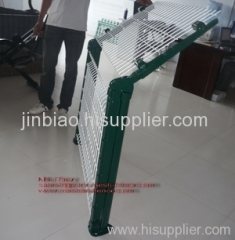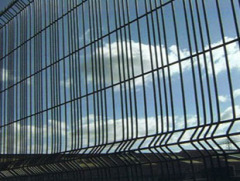
Welded Wire Security Fence
| Place of Origin: | Shandong |
|---|
Company Profile
| Location: | China (Mainland) |
|---|---|
| Business Type: | Trading Company |
Product Detail
| Model No.: | 23 |
|---|
Product Description
Security fencing is constructed with the specific primary purpose of discouraging people from entering or leaving an area. While one could argue that any fence material could serve as perimeter security, there are some that work better than others, including nine gauge galvanized chain-link, expanded metal, heavy ornamental, and welded wire.
Tighter weaves along with thicker metal wire are an excellent solution to security problems - these options make climbing over the fence nearly impossible, and cutting through the fence would become an arduous, time-wasting task.
Expanded metal mesh is available in both medium and high security grades, and is made with either special carbon steel, stainless steel, or aluminum. It can be used to go over an existing chain-link fence, either with or without additional support for the existing framework. Welded wire can also be used, and is typically available in seven to 10-foot wide panels. Penetration of welded wire is extremely difficult and time-consuming, allowing enough time for security personnel to locate and detain the intruder.
Razor ribbon, razor tape, and razor coils with barbed wire and other deterrents are additional choices that can be added on to a perimeter security system, creating an intimidation-factor with any would-be trespasser. For high security systems, many fence professionals also recommend utilizing additional fencing and interior partitioning products.
Technology is consistently being updated, and makes security tighter than ever. Various security systems can use laser, infrared, microwave, or video technologies to scan, detect, and issue alerts upon intrusion. Vibration systems are also being mounted on perimeter fences, sending alerts when there is vibration, cutting, or climbing of the fence.
While it makes sense to think of keeping intruders out while designing a security system, it's also just as important to think about how to let qualified people inside. Access control systems can be as high-tech or low-tech as chosen. New barcode readers and decal systems are proximity readers that can identify vehicles moving as fast as 25 miles per hour, scanning decals up to six feet away.
With access control technology widely switching to hands-free technology, the new systems are replacing former slot card readers or radio controlled "clickers," both of which can become jammed. Slot card readers are also easily vandalized.
Carefully planning and designing a security plan is assuring the safety of your property.







